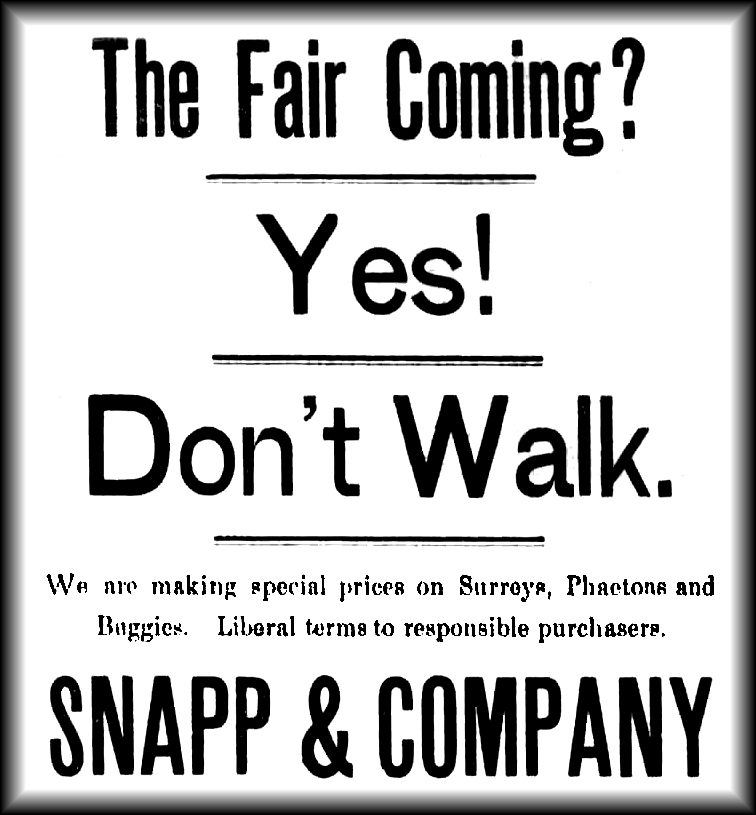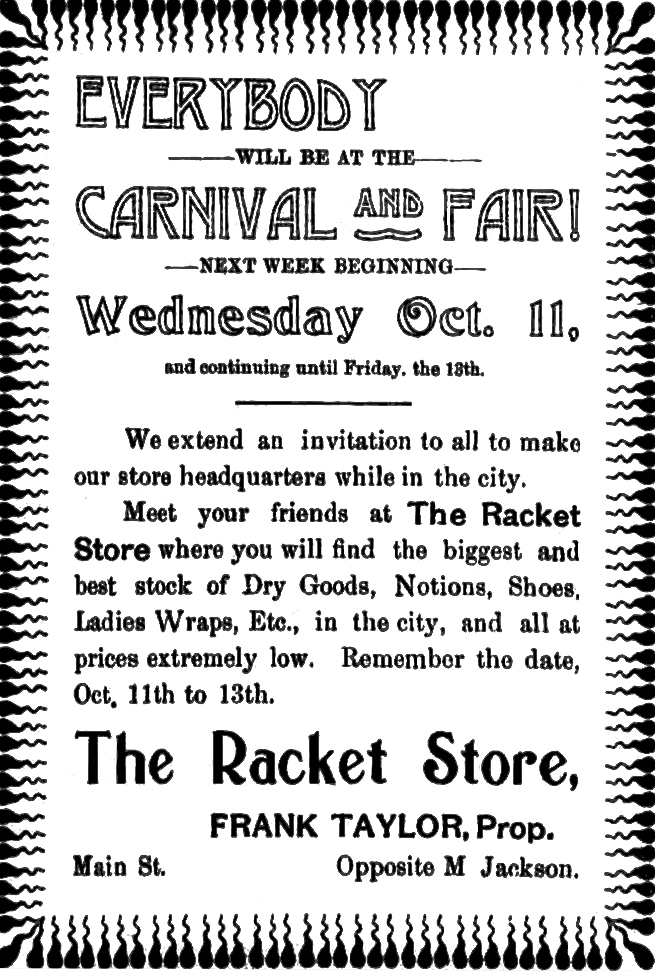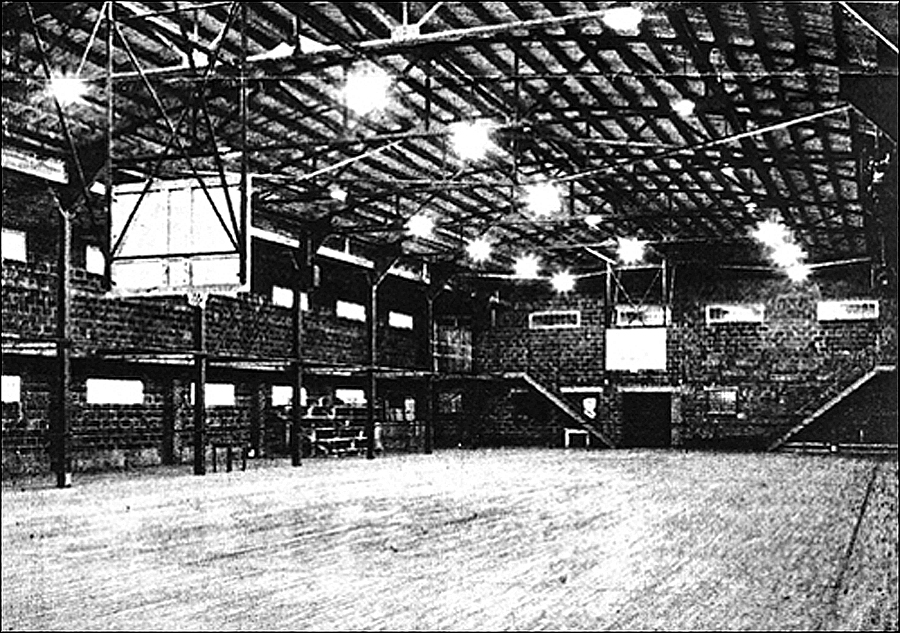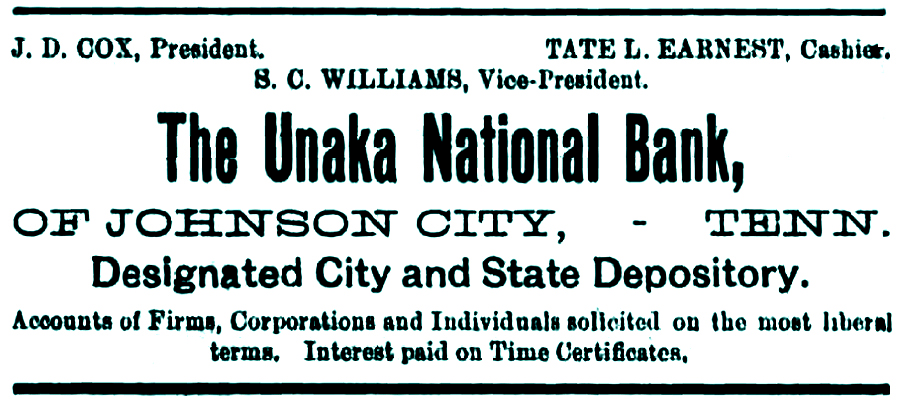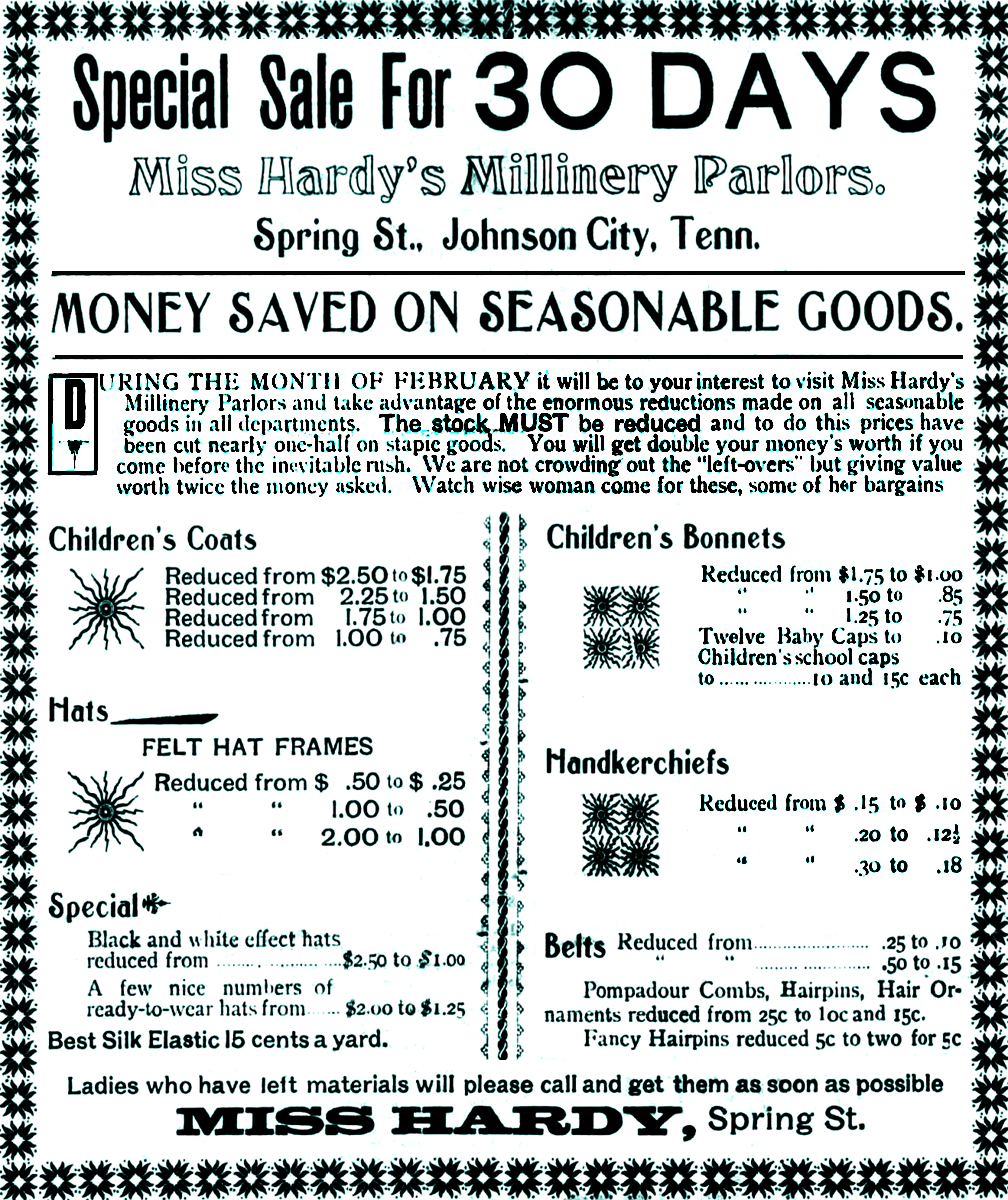During last Christmas, I featured some letters of area youngsters who wrote Santa Claus a letter in 1909, telling the jolly ole fellow what they wanted for Christmas from him. Since some of my readers identified a relative in the list, I decided to produce another column this year of letters to Santa. The date for this one is 1908. Only minor editing was done.
George Houston: Please bring me a wagon and a sled and some nuts and a football and some candy and some oranges and some of everything. And please bring me a tricycle and I think that is all I want for this Christmas. I will be asleep when you come. I am in school now. I live at 112 King Street. Good bye.
Earl Nave: I will write you a few lines to let you know what I want for Christmas. I want you to bring me a little storybook, and I want you to bring me two oranges and some candy, too. Ithink this is all for today. Your little friend.
Gertrude Candler: I want you to bring me a big doll and a doll carriage, and I want you to bring my little sisters something too. I want some candy and some nuts, oranges and lemons. Bring me a little doll, a little bed and a set of dishes. Please remember my mother and teacher. And, Santa, whatever you do, please see to it that all the poor children get something. I would like have a teddy bear and some clothes for it. I will close for this time. From your little friend.
Lawrence Jones: I will write you a few lines. I want you to bring me an automobile and a football and some oranges. I will be asleep when you come. Your little friend.
Lawrence Brown: I thought I would write you a few lines and let you know what I want Christmas. I want a wagon, some firecrackers, candy, nuts and oranges. Yours truly.
Edna Campbell: I will write you a letter to let you know what I want you to bring me a big doll and a little bed for her to sleep in, and bring me a whole lot of candy and some apples, nuts, and oranges. And bring me a cradle for my doll.
Clifton Little: I will write you to tell you what I want for Christmas. I want a wagon and a suit of clothes and some candy and nuts and some oranges and fire crackers and that will be all this time. Good bye.
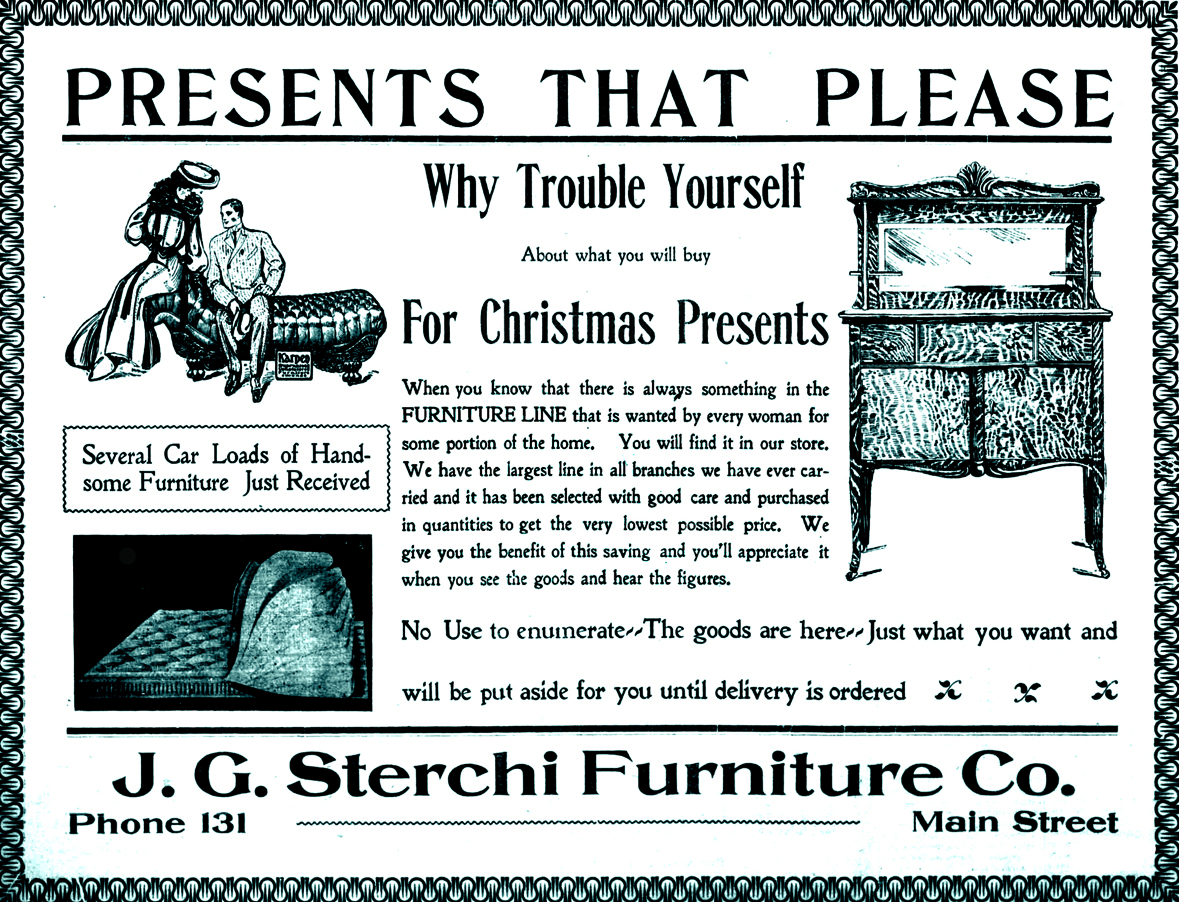
1908 Sterchi Furniture Company Advertisement
Frank Carroll: I want you to bring me a bow and arrow that will shoot high up in the sky. And bring me a gun and a box of cartridges. I would also like to have a sled and a wagon. Your friend.
(No Name, but Santa Knows): I want you to bring me a doll for Christmas and some candy and apples and oranges, a new dress, new ribbon, a handkerchief, a coat, a hat, a ring and some colored pencils. I will close for this time.
Willie Beekelhimer: I thought that I would write you a letter to tell you what I want you to bring me. I want a gold ring and a bracelet and some candies and some oranges and some apples and bring mama some presents. Bring papa something too. Bring little brother something nice for Christmas. Bring me some bananas and bring Miss Sarah Nugent, my teacher, some presents.
Ruth Williams: Well, the first thing will be a little doll which cost about 10 cents and is 5 inches tall. Another thing I want is a horn and some fruits and candy. Another thing I want is a book of fairy tales, and oh Santa Clause, I want some little dishes to have a little party. Please do it. I will write you again next Christmas. Are you any fatter? Write me. Good bye.
Thelma Houston: Will you bring my teacher a pretty doll, and will you bring me two dolls and please bring me a doll carriage too, and will you bring me a doll bed? Will you bring my mother a new dress and bring my father some shoes? I am in the second grade. Please bring me a ring. My teacher's name is Miss Nugent. Your friend.
Cyril Coly: I am writing a little letter to tell you what I want. I want a fire engine. That will be all this time. Good night.
Children are children, but their Christmas wish lists have certainly changed over the years.






_0-1050x400.jpg)
_0.jpg)

.jpg)
.jpg)

